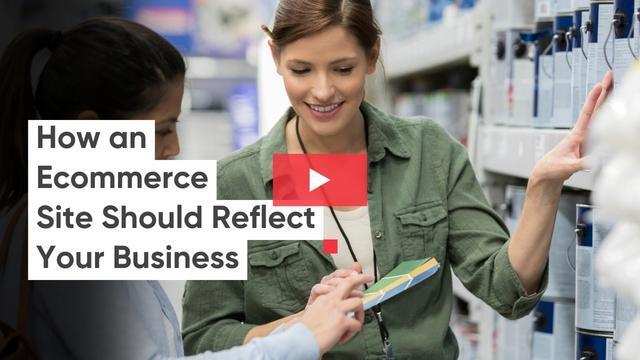Home > Blog
Read Time — 6 minutes
Where Do I Begin? How to Digitalise Your Building Materials Supply Business

One out of every three people (33.3%) you meet shops online. Despite the popularity of online shopping, many building materials supply merchants are still struggling to start selling online.
While the idea of an online storefront may be appealing, it’s hard to know where to even begin. Luckily, we plan to explain everything you need to look for when selecting a B2B ecommerce solution.
With so many website hosting platforms available, here are some specifics you want for your building materials storefront:
Built Specifically for B2B
When selling from your business to other businesses, there are specific functionalities needed within your website. Here are some B2B functionalities you should look for:
- Contract pricing features ensure personalised and accurate pricing for specific customers or customer groups. This gives your business a competitive advantage by attracting clients who seek suppliers willing to provide special pricing for account customers, whether they purchase in-person, over the phone, or online. Displaying contract pricing on your website eliminates confusion and ensures your customers see their pricing regardless of which channel they use to purchase from you.
- User restriction gives controlled access and pricing confidentiality within your platform. If your client requests an order approval process, user restrictions can facilitate these workflows by ensuring that only authorised personnel can place orders. These restrictions empower you to show individual users exactly what you want them to see on your website.
- In-platform marketing capabilities save your team time and money by providing all marketing needs within the application hosting your website. These capabilities can include abandoned cart recovery emails and discounts, drag-and-drop page layouts, and targeted banners. Having these features built-in gives your team the most return for their investment.
A Platform With Connection to Your ERP
Ensure customers are getting the most accurate information by connecting your website platform to your ERP system. Save yourself time rekeying information and show updated pricing and real-time inventory levels.
According to Shopify, 45% of online shoppers look to see what you have available in store online before coming to pick it up, making it imperative that your website is up-to-date on all your inventory. In that same article, Shopify mentions that 80% of contractors and tradespeople now use their smartphones to check prices, availability, and product information.
If your online storefront does not show customers your inventory and accurate pricing, you will lose customers to your competitors. For the most streamlined process, make sure your platform can integrate with your ERP.
Does Your Platform Offer Click & Collect?
Click & Collect is a trend that was popularised by the COVID-19 pandemic and allows customers convenience they find irreplaceable. With popular big box competitors such as Home Depot, Lowes, and Amazon adopting these techniques, building material supply merchants should also offer BOPIS to keep pace.
According to the 2022 Global Digital Shopping Playbook, 47% of BOPIS shoppers end up purchasing additional items while picking up their orders in-store. This is a must-have feature for an online storefront since it is expected to reach $703.18 billion globally by 2027.
The more convenient you make shopping, the happier your customers will be and the more likely they are to return to you as a preferred supplier.

Make Sure Your Platform Has a PIM
One of the biggest time-consumers when launching an ecommerce site is getting products online and organised into categories.
An integrated Product Information Management (PIM) system ensures consistency and accuracy across your product information. Having one touchpoint for all product information allows businesses to update information from one central location and reflects those changes across all connected channels.
Not only does this help you maintain your website, but it also accelerates the implementation process, allowing you to get your site live faster. Industries like building materials supply can have complex product catalogs and a PIM ensures information is presented consistently across various platforms, taking one less responsibility off your plate.
Does Your Platform Offer Online Secure Payment Options?
With any type of retail, you are bound to run into scammers. However, you can still fight against fraudulent revenue with online secure payment methods.
A B2B website platform should allow customers to checkout with both PO numbers and credit card options. This is especially important if you intend on extending your products to B2C shoppers or guests checking out on your website.
The key is to provide flexible, secure payment options to all of your customers to create a convenient shopping experience that will generate repeat orders.
Avoid Third-Party Solutions
If you don’t mind blending in with your competition, cookie-cutter templates and features might suffice. If you’re considering relying solely on third-party solutions to develop your online presence, you may want to reconsider.
While it may seem cost-efficient upfront, subscription fees and customisation costs will add up in the long term. Not to mention maintenance, marketing, security, payment processing, and add-on costs.
Investing in a single solution that includes everything you need is the key to eliminating costs and discrepancies between multiple partnerships.

Be Wary of Co-Op Websites
Co-op website interfaces are quick, easy, and inexpensive until you lose up to 6% of your margin revenue share and have no control over displayed inventory. Here is a list of reasons to be wary of co-ops:
- No privacy on margins and prices
- Under representation of your full product mix on the website
- Outsourced customer service and can only return products to co-op, not your store
- Direct brand competition
- Loss of competitive differentiation

An ecommerce Site Should Reflect Your Business
At the end of the day, your ecommerce site is an extension of your business and should represent your branding and values.
Include contact information, employee pictures and biographies, and content pages to make the most of your ecommerce experience. Hubspot found that companies that have a blog on their website receive 55% more visitors than those that don’t. If that doesn’t convince you, blog posts can get you three times more leads than paid search advertising when done correctly.

Conclusion
Starting your online website can be anxiety-inducing, especially when you don’t know where to begin. But, with the current state of the world, a website will be a worthy investment. When you decide to make the leap into the ecommerce space, be cautious and smart about where your money is going and the impact it could have on your online presence.
If you enjoyed reading about digitalising your building materials supply business, check out these other articles:


